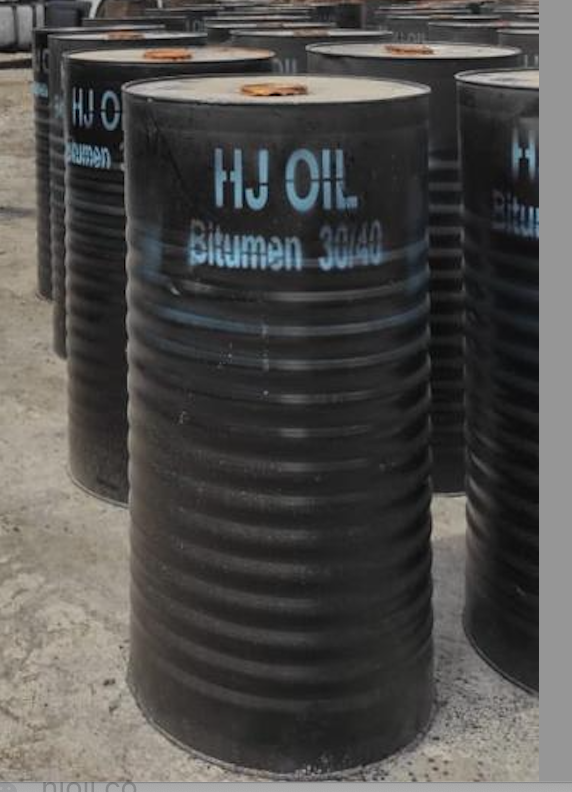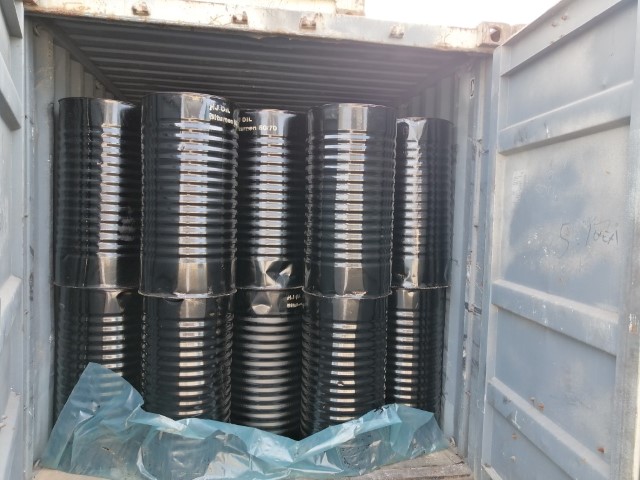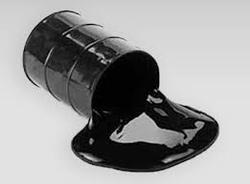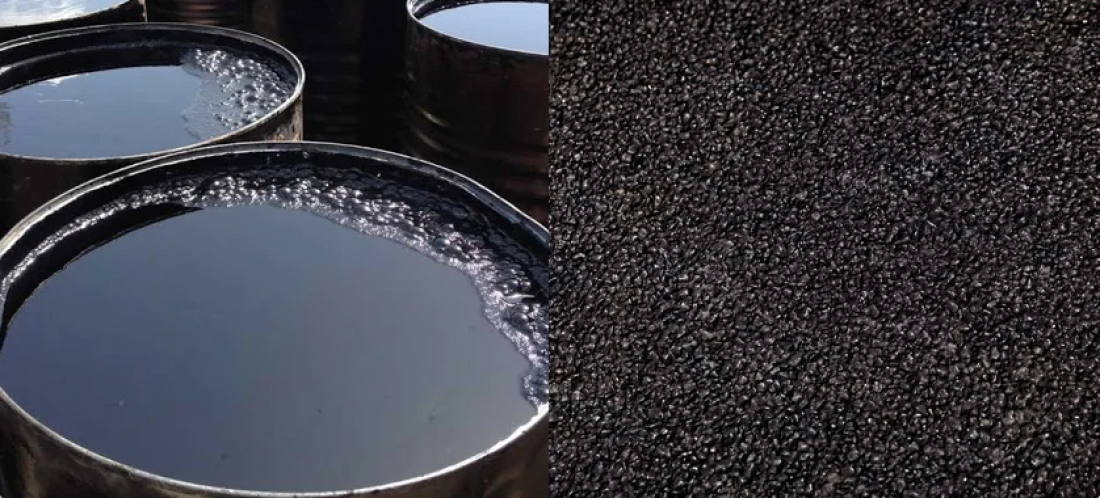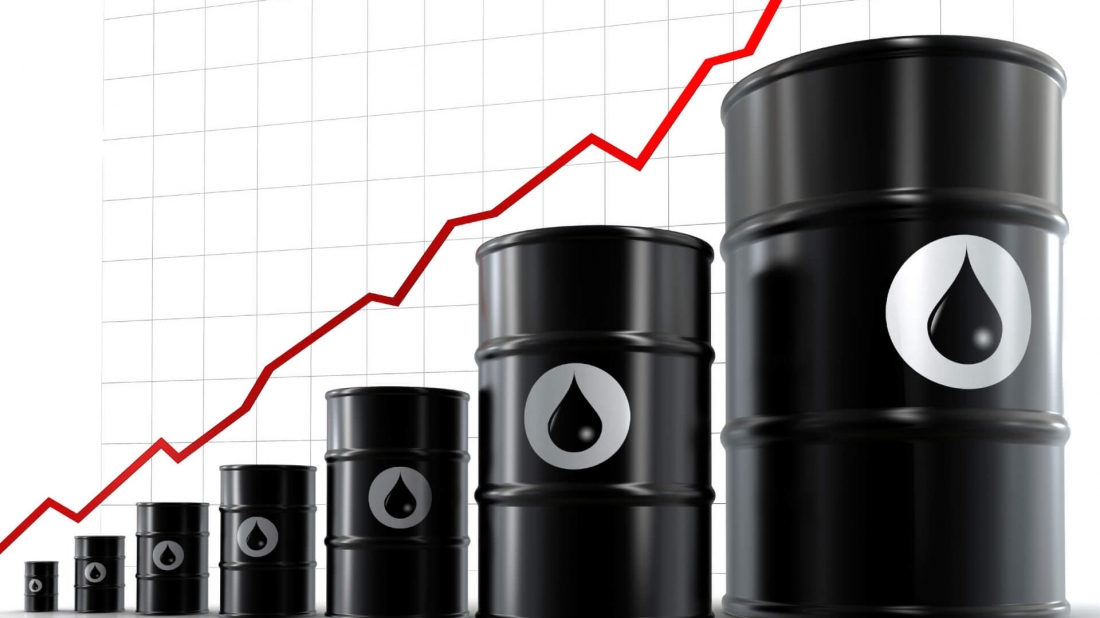Bitumen Definition

Bitumen, also known as asphalt in the United States, is a substance that forms through the distillation of crude oil. It has waterproofing and adhesive properties. Bitumen production through distillation removes lighter crude oil components, such as gasoline and diesel, leaving the “heavier” Asphalt behind. The producer often refines it several times to improve its grade. Bitumen can also occur in nature: Deposits of naturally occurring bitumen form at the bottom of ancient lakes, where prehistoric organisms have since decayed and have been subjected to heat and pressure.
Bitumen is viscous, nonvolatile liquid or solid. Asphalt is a complex colloid system the chemical properties of which are dependent on the properties of crude oil from which it is produced. Pure bitumen is a colloid dispersion of microscopic asphalt particles (dispersion phase). The chemical composition of Asphalt is a mixture of various hydrocarbons with molecules of oxygen, sulfur, and nitrogen. Hydrocarbons present in bitumen are mostly condensed naphthene and aromatic rings with the small number of side paraffin chains. Mass fraction of hydrocarbons is 75-85%, hydrogen 9-10%, oxygen 2-8%, sulphur 5-7%, and nitrogen 0.1-0.5%. Bitumen is partially or completely soluble in various organic solvents. Dissolved fractions of Asphalt insolvent are called maltenes or petrolenes, and undissolved fractions are called asphaltenes. The maltenes are a mixture of resins and oil, and they are a dispersing agent. For the most part, the physical properties of bitumen depend on the dispersion degree of asphaltenes in maltenes.
Properties of Asphalt
– Adhesion: Bitumen has the ability to adhere to a solid surface in a fluid state depending on the nature of the surface. The presence of water on the surface will prevent adhesion.
– Resistance to Water: Bitumen is water-resistant. Under some conditions, water may be absorbed by minute quantities of inorganic salts in the bitumen or filler in it.
– Hardness: To measure the hardness of bitumen, the penetration test is conducted, which measures the depth of penetration in tenths of mm. of a weighted needle in bitumen after a given time, at a known temperature. Commonly a weight of 100 gm is applied for 5 sec at a temperature of 77 °F. The penetration is a measure of hardness. Typical results are 10 for hard coating asphalt, 15 to 40 for roofing asphalt and up to 100 or more for waterproofing bitumen.
– Viscosity and Flow: The viscous or flow properties of bitumen are of importance both at high temperature during processing and application and at low temperature to which bitumen is subjected during service. The flow properties of bitumen vary considerably with temperature and stress conditions. Deterioration, or loss of the desirable properties of bitumen, takes the form of hardening. Resultantly, a decrease in adhesive and flow properties and an increase in the softening point temperature and coefficient of thermal expansion.
– Softening point: Softening point is the temperature at which a steel ball falls a known distance through the bitumen when the test assembly is heated at a known rate. Usually, the test consist of a (3/8)in dia steel ball, weigh 3.5 gm, which is allowed to sink through a (5/8) in dia, (1/4) in the thick disk of bitumen in a brass ring. The whole assembly is heated at a rate of 9 °F per min. Typical values would be 240 °F for coating grade asphalts, 140 °F to 220 °F for roofing asphalt and down to 115 °F for bituminous waterproofing material.
– Ductility: The ductility test is conducted to determine the amount bitumen will stretch at a temperature below its softening point. A briquette having a cross-sectional area of 1 in2 is placed in a tester at 77 °F. Ductility values range from 0 to over 150 depending on the type of bitumen.
Bitumen Applications
The major bitumen produced in Middle East and the world known as Asphaltum is used in road construction. In road construction, It is used as a bonding agent for asphalt, and the use of it in the construction industry is ranked second as insulation. Estimates show that the annual amount of Egyptian bitumen in the world is about 102 million tons. Of this, about 85 percent of the Asphaltum is used in the road construction industry, and the 60/70 bitumen is most used. More than 10% of the bitumen produced in the world is used in the building industry and as insulation. And seagulls are used as sealing, insulating, pipe coating, etc.
- Surface coating
- Intruding Macadam
- Cold machine mixes
- Suspended seals
- Surface lining
- Lining reinforcement consolidation of soil-in-situ
- Dust Controlling
- Oil mulch
- Highways
- Airport runways
- Footways / Pedestrian Ways
- Car parks
- Racetracks
- Tennis courts
- Roofing
- Damp proofing
- Dams
- Reservoir and pool linings
- Soundproofing
- Pipe coatings
- Cable Coatings
- Paints
- Building Water Proofing
- Tile underlying waterproofing
- Newspaper Ink Production
- And many other applications
Pipe Coating
Coating systems advanced and at the same time modified polymers on the basis of economic the result is a wide research and long-lasting oil companies shell and Phoenix are Denmark. the characteristics of the coating causing severe epidemics can be high adhesion and resistant top of that soil degradation and stresses cathodic. Has your unique restorative properties. An article for corrosion protection of steel pipes buried in soil for a long period of time, with an appropriate yield. This coating due to being economical and safe for the environment continues to be an option in the transmission lines projects.
Bituseal Coating System
The Bituseal Coating system which was jointly developed by Phoenix International A/S and Shell International Petroleum Co.
bituseal is a PMB pipe coating system which combines the ease of hot applied coating processes with a high degree of corrosion protection and offers both reliability and affordability to clients. In terms of its technical properties, Bituseal matches and even outperforms 3-layer polyethylene coating.Bituseal has an excellent record in gas, water, and offshore pipelines.
Bituseal Coating Field Joint Membrane
Joints are the weakest link in any pipeline. The Bituseal Field Joint Membrane is specifically designed for fast, easy application on-site and to afford the same level of corrosion protection both in pipelines and joints. Bituseal Membrane is to cover pipeline joints or repairing damaged sections of coatings. It can be supplied either in the form of rolls or patches. It is a unique form of cover from both technical and economical viewpoints and a superb substitute for heat shrinkable sleeve. Apart from Bituseal system, it is also applicable on several other coatings like 3-layer polyethylene, bitumen enamel and coal tar with great consistency.
Roll Sheet
WaterProofing Bitumen Membrane Sheet (Here referred to as WPBS) are the best industrial outcome in the area of waterproofing ever attained by scientific and technological advancement. These products enable us to prevent the adverse effects of rain and snow water penetration into structures from their foundation up to roof. Employing different polymers and synthetic fibers, WPBS pass through well-equipped labs to be amended for attaining resistance against, high and low temperatures, tearing tension, and penetration of water
In addition to low weight and resistance against cold, heat, expansion and contraction, HJ OIL WPBS show high endurance being produced in two aluminum-covered and polyethylene film-covered versions. There two types of base products: single layered (nonwoven Spunbond polyester), and double layered (stringed fiber gloss tissue and 110 gr polyester) giving the product higher tensile strength against vibrations of the structure. WPBS is used in waterproofing of roofs, water canals, the foundation of tunnels, dams, pools, sloped surfaces, and the like.
Also, HJ OIL Bitumen membrane sheet reinforced by two layers of fiberglass and non-woven tissues with “needdle type” polyester. Azargum humidity polyester in spite of economic point of view possesses perfect utility qualities, therefore, resolves additional directional stability and ordinary surface replacements.
Types of Bitumen By Grade
There are different types of asphalt cement available with different properties, specifications and uses based on requirements of consuming industry.
Oxidized Grade
Blown bitumen grades or Oxidized Bitumen are produced by passing air through the penetration grades. This process gives the bitumen more rubbery properties than its original formula and they are simply harder bitumen. Hard asphalt under controlled temperature conditions is widely used as an anti-slip layer compound in the piling industry, for manufacture of roofing felts, the roofing and waterproofing industries, for sound dampening felts and under carriage sealant in the automotive industry, electric cable joint protection, joint filling compound, sealant compound and many others. Also used in sealing saw cuts and joints where expected movements are minimum. It is also used in the manufacturing of bituminous marine mastic for the oil & gas pipeline joints.
Penetration Grade
Graded Bitumen is classified by the depth to which a standard needle will penetrate under specified test conditions. This “pen” test classification is used to indicate the hardness of bitumen, lower penetration indicating a harder bitumen. Specifications for penetration graded bitumens normally state the penetration range for a grade, e.g. 50/70. Other tests are used to classify the bitumen for specification purposes, such as softening point, solubility, flash point etc.
Performance Grade
Performance Grade (PG) bitumen is Asphaltum which is graded based on its performance at different temperatures. The Long-Term Pavement Performance(LTPP) has given certain algorithm to calculate the temperature of the pavement based on the temperature of the air above. From this, the highest and the lowest temperatures of the pavement is calculated and the bitumen that performs well in that temperature range is selected.
Viscosity Grade
Viscosity Grade Bitumen (Asphalt) is a standard grade Asphaltum usually used as a Paving Grade Bitumen suitable for road construction and for the production of asphalt pavements with superior properties. This grade of Asphaltum is mainly used in the manufacture of hot mix asphalt for bases and wearing courses, and possesses characteristics and qualities unique sand quite different from other agents. They achieve very flexible and tenacious connections with other materials due mainly to viscoelastic response of Asphaltum, which behaviour depends on how fast charges are applied.
Polymer Modified
Polymer modified bitumen (PMB) is one of the specially designed and engineered Asphaltum grades that are used in making pavement, roads for heavy duty traffic and home roofing solutions to withstand extreme weather conditions. PMB is a normal bitumen with the added polymer, which gives it extra strength, high cohesiveness and resistance to fatigue, stripping and deformations, making it a favorable material for infrastructure.
Other Types of Bitumen
Cutback Bitumen
Cutback or Liquid Bitumen is asphaltum that is dissolved in a solvent. Typical solvents include Naphtha, gasoline and kerosene, white spirit etc. The type of solvent controls the curing time while the amount determines the viscosity of the Cutback Bitumen. Bitumen is ‘cutback’ by adding controlled amounts of petroleum distillates such as kerosene. This is done to reduce the viscosity of the asphaltum temporarily so it can penetrate pavements more effectively or to allow spraying at temperatures that are too cold for successful sprayed sealing with neat Asphaltum. The materials used to cutback bitumen will evaporate after application to leave the remaining material similar in hardness to the original asphaltum.
Blown Bitumen
It comes from hot air blown to pure asphaltum in the last stage of refining. In this process, hot air having 200-300 degree centigrade temperature is blown to bitumen container with porous tubes. In this process, hydrogen atoms in Asphaltum hydrocarbon are combined with oxygen in the air and by forming water, polymerization happens. Compared with pure Asphaltum, blown asphalt has a low penetration rate and a high softness point. This kind is used in making roof sheets, automobile battery, and coating.
Natural Bitumen
Natural bitumen or native asphalts are a class of Asphaltum which have been naturally produced due to climate conditions in the course of time, and are used without the need to be processed in distillation ways; they are very varied regarding their composition and properties.
Coating Bitumen
Bitumen coating compositions having substantially improved application and drying properties and producing coatings of improved properties including resistance to ultraviolet rays and alligatoring resulting therefrom said coating compositions comprising volatile solvent solutions of a bitumen coating material having softening point between 110 F To 250 F. The bitumen coating are also characteristically non-viscous materials which are not thixotropic and are therefore ordinarily applied as thin films. It’s compositions may also contain filler materials which tend to settle from the non-thixotropic compositions after storage for only a short time. It has been proposed in the past to add inert colloidal fillers such as silica to obtain thixotropic properties and thicker films on the application of the compositions. However, even such inert fillers tend to affect only solution properties and generally exist in the finished coating as an expensive additive which does not benefit other properties of the coating.
Bitumen Emulsion
This is a mixture of water & asphaltum. Hey wait, we know that asphaltum is a oil product and it cannot be mixed with water. That is why we add an emulsifier (a surface active agent) with water before adding asphaltum. Addition of emulsifier with water facilitates breaking of asphaltum into minute particles and keeps it dispersed in suspension.Therefore we can say that a bitumen emulsion is a liquid product consisting of three things, (i.e. water + Emulsion + Asphaltum) where droplets of asphaltum are suspended in water.

